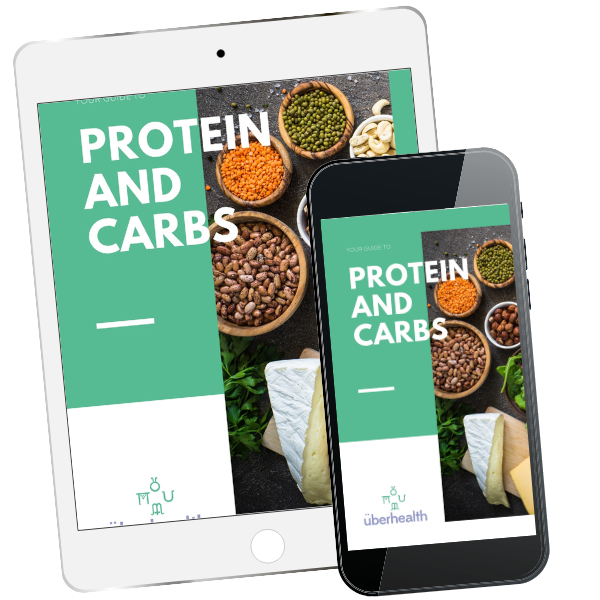Addressing Under-Eating and Over-Training: Preventing Menstrual Irregularities in Active Women

Women’s bodies are highly sensitive to energy availability, and when the balance between nutrition, training, and recovery is disrupted, menstrual irregularities often follow. Many active women, athletes, and fitness enthusiasts unknowingly fall into patterns of under-eating and over-training, leading to hormonal imbalances, fatigue, and metabolic dysfunction.
As practitioners, recognising the warning signs of Relative Energy Deficiency in Sport (RED-S) and other forms of energy imbalance is critical in preventing long-term health consequences. This article explores how under-fuelling and excessive training impact women’s hormonal health, and how practitioners can support clients in regaining balance without compromising performance.
The Link Between Energy Availability and Menstrual Health
The menstrual cycle is a key indicator of metabolic health. When the body does not receive enough energy to support both exercise demands and essential physiological functions, it down-regulates reproductive function to conserve resources. This results in irregular periods, missing periods (amenorrhoea), or disrupted ovulation.
This phenomenon is commonly associated with:
- Hypothalamic Amenorrhoea (HA): The absence of menstruation due to low energy availability and stress on the hypothalamus.
- Relative Energy Deficiency in Sport (RED-S): A broader condition affecting metabolism, immunity, bone health, and cardiovascular function.
🚨 Warning Signs of Under-Eating and Over-Training:
- Irregular or missing periods
- Persistent fatigue, low mood, or irritability
- Difficulty recovering from workouts
- Frequent injuries (stress fractures, joint pain)
- Loss of strength or endurance despite training
- Increased sugar cravings and binge-eating episodes
- Digestive issues, bloating, or constipation
For practitioners, these red flags should prompt a comprehensive assessment of energy availability, nutrition habits, and training load.
How Under-Eating Impacts Hormonal Balance
Many women unknowingly consume fewer calories than their body requires—especially those in aesthetic sports (dance, gymnastics, bodybuilding) or endurance training (running, cycling, triathlons).
Oestrogen & Progesterone Suppression:
- Low energy availability disrupts ovulation, leading to low progesterone levels, which contributes to poor sleep, anxiety, and bone loss.
- Oestrogen deficiency increases the risk of osteoporosis and cardiovascular disease over time.
Increased Cortisol & Stress Hormones:
- Chronic under-fuelling triggers high cortisol, which increases fatigue, mood swings, and muscle breakdown.
- Elevated cortisol levels worsen insulin resistance, making weight management harder.
Reduced Thyroid Function:
- Low energy intake slows metabolism and reduces body temperature.
- This leads to fatigue, poor concentration, and difficulty losing weight.
For practitioners, assessing hormone panels (FSH, LH, oestrogen, progesterone, thyroid hormones) can reveal imbalances caused by energy deficiency.
The Hazards of Over-Training Without Proper Recovery
More exercise is not always better—especially when recovery and nutrition are inadequate. Many women push through exhaustion, believing fatigue is part of training, when in reality, their bodies are in a chronic state of depletion.
The Risk of Over-Training Syndrome (OTS):
- Leads to elevated inflammation, muscle loss, and poor immune function.
- Sleep disturbances and poor mood regulation due to nervous system dysregulation.
- Increased susceptibility to injuries, including stress fractures due to weakened bones.
How Over-Training Affects the Menstrual Cycle:
- Excessive endurance training without fuelling can suppress ovulation.
- Too much high-intensity training (HIIT, CrossFit) increases cortisol, leading to prolonged recovery.
- Lack of rest days and poor sleep further disrupt hormonal rhythms.
Practitioners should assess training loads, recovery times, and sleep patterns to help women identify when to scale back.
4 Ways Practitioners Can Support Women in Restoring Hormonal Balance
1. Optimise Energy Availability
- Increase caloric intake to match training load.
- Encourage pre- and post-workout fuelling to support muscle recovery.
- Address food fears—many women under-eat due to outdated diet culture beliefs.
2. Adjust Training Volume & Recovery Protocols
- Incorporate restorative workouts (yoga, Pilates, mobility drills).
- Reduce training intensity during the luteal phase to prevent burnout.
- Emphasise sleep, active recovery, and hydration.
3. Monitor Key Biomarkers
- Test for iron, vitamin D, thyroid function, and reproductive hormones.
- Use basal body temperature tracking to assess ovulation.
- Recommend bone density scans for long-term health monitoring.
4. Educate Clients About the Importance of the Menstrual Cycle
- Reframe missing periods as a warning sign, not a fitness achievement.
- Teach cycle tracking and how to adapt training and nutrition accordingly.
- Encourage women to listen to their bodies rather than force intense training year-round.
Learn How to Prevent Energy Deficiency and Menstrual Disruptions
To deepen your knowledge on the relationship between training, nutrition, and the menstrual cycle, join the "Menstrual Cycles and Metabolism" workshop, led by Kira Sutherland and Lara Briden.
🎓 This practitioner-focused training covers:
- Identifying energy deficiency and RED-S in active women
- Nutrition strategies to restore energy balance and cycle health
- The effects of over-training on metabolism and hormones
- Practical applications for tailoring training and fuelling with the menstrual cycle
📌 Access the training here: Menstrual Cycles and Metabolism Workshop
A Smarter Approach to Training & Recovery for Women
Many active women unintentionally harm their metabolism and hormonal health by under-eating and over-training. Recognising the early signs of RED-S and hormonal imbalances allows practitioners to intervene before long-term health consequences arise.
Helping female clients match their nutrition, training, and recovery to their menstrual cycle not only improves performance and endurance but also supports hormonal balance, mental clarity, and overall wellbeing.
By shifting the conversation from restriction and over-exercise to nourishment and sustainability, practitioners can empower women to build long-term strength and resilience—without sacrificing their health.
Key Terms and Further Reading
- Menstrual Cycle Phases:
- Menstruation: The phase where the uterine lining is shed, resulting in menstrual bleeding.
- Follicular Phase: The phase after menstruation where follicles in the ovaries mature, leading up to ovulation.
- Ovulation: The release of a mature egg from the ovary, typically occurring mid-cycle.
- Luteal Phase: The phase after ovulation where the body prepares for a possible pregnancy; if fertilization doesn't occur, it leads to menstruation.
- Hormones Involved:
- Estrogen: A primary female sex hormone responsible for the development and regulation of the female reproductive system and secondary sexual characteristics.
- Progesterone: A hormone that regulates the condition of the endometrium (inner lining of the uterus), playing a role in the menstrual cycle and pregnancy.
- Luteinizing Hormone (LH): A hormone that triggers ovulation and stimulates the secretion of estrogen and progesterone.
- Follicle-Stimulating Hormone (FSH): A hormone that stimulates the growth of ovarian follicles before the release of an egg.
- Nutrients and Their Roles:
- Iron: A mineral essential for the formation of hemoglobin in red blood cells, aiding in oxygen transport. Important for replenishing blood loss during menstruation.
- Magnesium: A mineral involved in over 300 biochemical reactions in the body, including muscle and nerve function, blood glucose control, and bone health.
- Omega-3 Fatty Acids: Essential fats with anti-inflammatory properties, beneficial for heart health and may help alleviate menstrual cramps.
- Leucine: An essential amino acid that plays a critical role in protein synthesis and muscle repair.
- Conditions Related to Energy Balance:
- Relative Energy Deficiency in Sport (RED-S): A syndrome affecting athletes, characterized by insufficient energy intake relative to energy expenditure, leading to impaired physiological functions.
- Hypothalamic Amenorrhea (HA): The absence of menstrual periods due to a disruption in the hypothalamus, often linked to low energy availability, stress, or excessive exercise.
- Exercise and Menstrual Health:
- Cycle Syncing: The practice of aligning diet, exercise, and lifestyle choices with the phases of the menstrual cycle to optimise health and performance.
- Overtraining Syndrome: A condition resulting from excessive training without adequate rest, leading to decreased performance and potential health issues.
Understanding these terms and nutrients is essential for comprehending the intricate relationship between the menstrual cycle, nutrition, and exercise, enabling more informed decisions regarding health and wellness.
FREE RESOURCE


